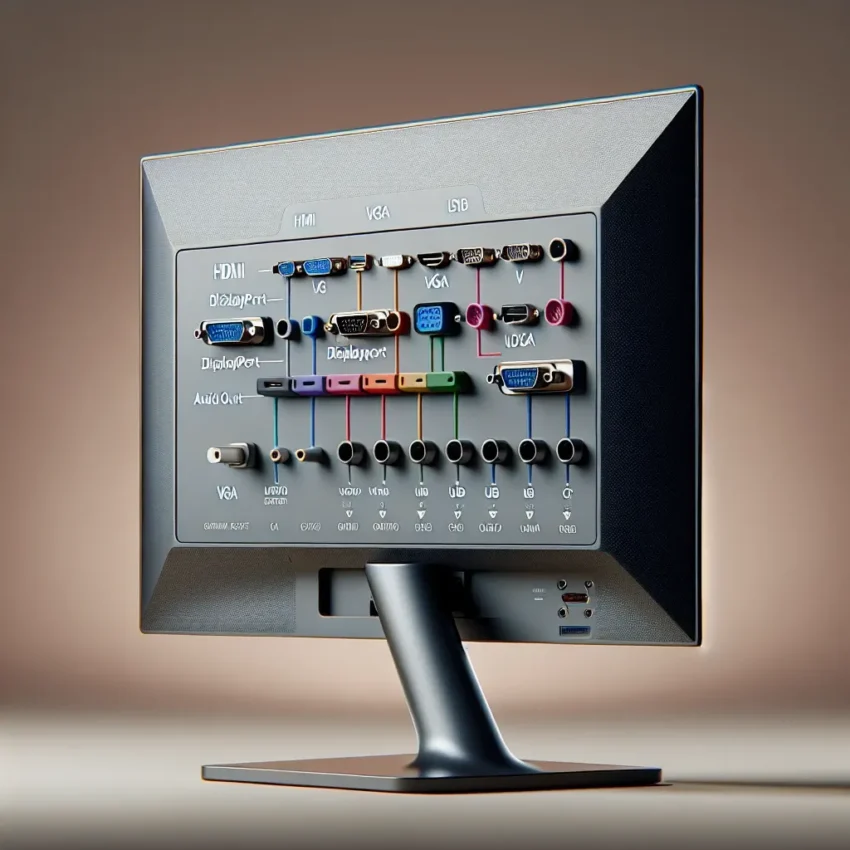Introduction to Ports on an LED Monitor
When it comes to setting up your workspace or entertainment zone with an LED monitor, understanding the various ports available is crucial. These ports act as gateways, enabling connectivity between your monitor and other devices such as laptops, desktops, gaming consoles, and even cameras.
Common Ports on an LED Monitor
1. HDMI (High-Definition Multimedia Interface)
HDMI is perhaps the most commonly found port on LED monitors today. It allows for a high-definition video and audio connection, typically used for connecting to computers, gaming consoles, and Blu-ray players.
| Port | Use | Data Type |
|---|---|---|
| HDMI | Connects to computers, gaming consoles, Blu-ray players | Video and Audio |
2. DisplayPort
DisplayPort is another popular choice for connecting an LED monitor. Known for handling higher resolutions and refresh rates, it is a favorite among gamers and graphic designers.
| Port | Use | Data Type |
|---|---|---|
| DisplayPort | Used by gamers and graphic designers | Video and Audio |
3. VGA (Video Graphics Array)
VGA ports may seem old-fashioned, but they are still found on many LED monitors for legacy support. Though it only carries video signals, it remains useful for older computers and some projectors.
| Port | Use | Data Type |
|---|---|---|
| VGA | Legacy support for older computers | Video |
4. DVI (Digital Visual Interface)
DVI offers both digital and analog connections and is typically found on monitors built during the late 2000s. It’s useful for connecting to older systems that may not have HDMI ports.
| Port | Use | Data Type |
|---|---|---|
| DVI | Connecting older systems | Video |
5. USB Ports
Modern LED monitors often come with USB ports, enabling the connection of peripherals like keyboards, mice, and storage devices. Some high-end models even come with USB-C, which supports video transfer and charging capabilities.
| Port | Use | Data Type |
|---|---|---|
| USB | Connect peripherals like keyboards, mice, storage devices | Data |
| USB-C | Supports video transfer and charging | Video, Audio, Data |
6. Audio Jacks
Some LED monitors include audio in/out jacks, allowing you to connect headphones, speakers, or external microphones for an enhanced multimedia experience.
| Port | Use | Data Type |
|---|---|---|
| Audio Jacks | Connect headphones, speakers, microphones | Audio |
7. Thunderbolt
Thunderbolt ports are becoming more common, known for their high speed and versatility. They support data transfer, video output, and charging over a single cable, making them highly convenient for Mac users.
| Port | Use | Data Type |
|---|---|---|
| Thunderbolt | High-speed data transfer, video output, charging | Video, Audio, Data |
Conclusion
Understanding the different types of ports on an LED monitor can significantly influence your buying decision and setup process. From the commonly used HDMI and DisplayPort to the versatile Thunderbolt, each port plays a critical role in maximizing your monitor’s capabilities. Be sure to consider the compatibility of these ports with your existing devices to create a seamless and efficient workspace or entertainment system.

